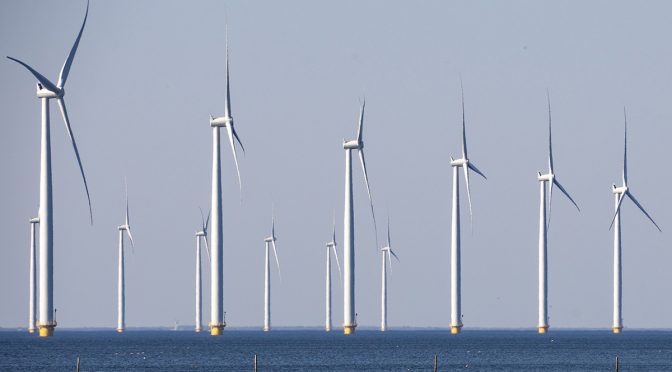To get an idea of ??the potential, the country currently has 15.5 GW of installed windenergy capacity, but has no offshore park
The Energy Research Company (EPE) has identified favorable winds in Brazil for the development of offshore wind energy projects, the so-called offshore plants, throughout the Exclusive Economic Zone, highlighting some areas in the coast of the Northeast, Southeast. and south.
Preliminary studies of the state-owned company, linked to the Ministry of Mines and Energy, pointed potential for the generation of 697 gigawatts, for winds with speeds between 7 and 7.5 meters per second.
To get an idea of ??the potential, the country currently has 15.5 GW of installed wind generation capacity, but has no offshore park, a segment that has developed abroad.
Estimates of the potential are part of a study under development by EPE called the “2035 Offshore Wind Roadmap”, and will be discussed next week at the OTC Brazil 2019 international congress, historically focused on oil and gas, but which opened energy-related debates this year. renewable
“EPE expects the Roadmap to identify the elements necessary for the viability of offshore wind projects in the medium term in the country,” said the energy research analyst at EPE’s Director of Economic-Energy and Environmental Studies Mariana Species , in a joint note sent by EPE and OTC to Reuters.
In the Southeast, the states with the highest potential are Rio de Janeiro and Espirito Santo, while in the South were Santa Catarina and Rio Grande do Sul.
EPE expects that the Roadmap, which is still being prepared, will bring discussions on technological, regulatory, environmental and associated costs, as well as considerations related to the connection of these projects to the National Interconnected System.
Mariana Species, who will attend a table on the topic at the OTC, said in the note that she believes that the exchange of experience and information gathered by the oil industry is important for the analysis of the economic viability of an offshore wind project.
This is because the oil sector has a lot of accumulated information about the seabed, sediments, currents and other physiographic aspects in Brazilian offshore areas.
“If future offshore wind resources are to be harnessed, this information could be useful for refining cost analyzes and defining which technologies, especially in relation to the type of foundation, are best suited for each context,” said Mariana.
The analyst pointed out that two of the three areas with the highest wind potential have been studied by the oil industry for decades: the Northeast, Rio de Janeiro and Espírito Santo coastlines.
As an example of the initiative, Petrobras (PETR3; PETR4) signed last September a memorandum of understanding with Norwegian Equinor for possible joint investments in offshore wind in Brazil.
Renewable energy is not on Petrobras’ priority agenda, which is focusing on oil exploration and production. However, the oil company is still studying the subject.
OTC Brazil 2019 Chairman Marcos Assayag also noted that the offshore industry is aware of the opportunities created by the energy transition to low carbon energy.
“Hence the offshore renewables programming that, for the first time in history, this year entered the agenda, first in Houston and now here in Brazil,” he said. “We will have a busy panel with 11 participants, including representatives from Petrobras and Equinor, which already operates in this sector in Europe”.


